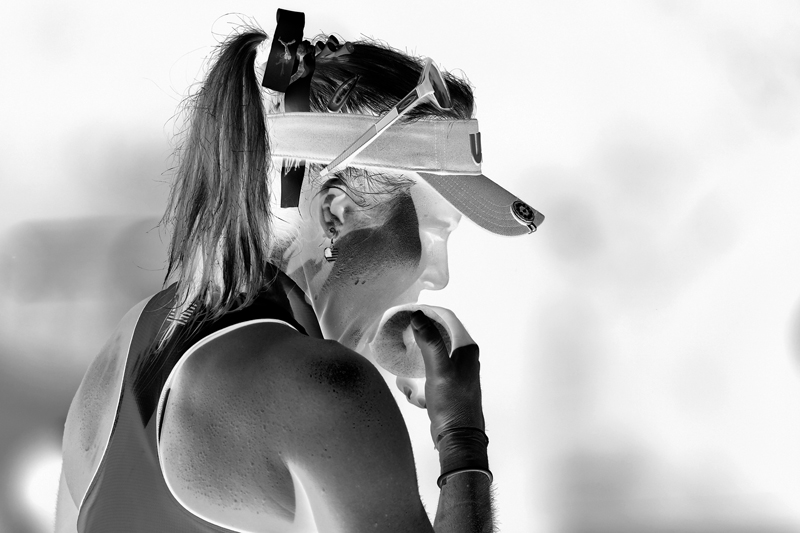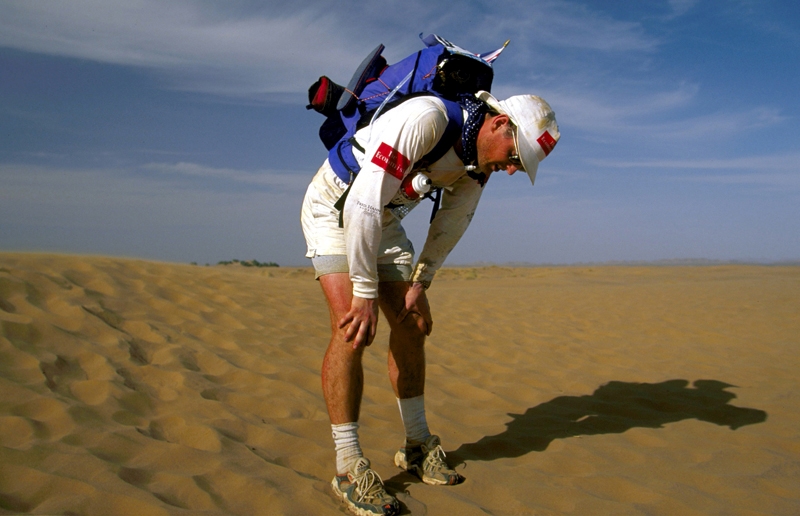You are viewing 1 of your 1 free articles. For unlimited access take a risk-free trial
Sports psychology: stress management in sport
Athletics coaches are constantly experimenting on their athletes, whether consciously or not, by seeing how much training they can take. Up to a certain level the athlete improves in performance, to a measurable extent, but there eventually comes a point when the training is too much.
How athletes can avoid emotional burnout in sport
Athletics coaches are constantly experimenting on their athletes, whether consciously or not, by seeing how much training they can take. Up to a certain level the athlete improves in performance, to a measurable extent, but there eventually comes a point when the training is too much. The athlete becomes more and more tired and eventually breaks down. This breakdown is often seen in the form of listlessness, loss of appetite, poor sleep pattern, accompanied by a susceptibility to infections. Conversely, the athlete who has the right training load seems full of energy and is hardly ever ill.
Stress is non-specific
To understand the reasons behind this one must go back to Dr Hans Selye, the Canadian who pioneered the investigation of stress in a holistic way. His book, ’Stress Without Distress’ (published by J. H. Lippincott, New York, 1974) had a great effect on my approach to training. His concept is simple and yet all-embracing - that stress is non-specific.
When the body is placed under any kind of stress it alters its hormone balance. Not only adrenaline, but substances like testosterone, human growth hormone, the glucocorticoids and mineralocorticoids show an increased output, while the production of others falls. It doesn’t matter what the stress is - it may be problems of moving house, working for exams, playing too many games of football, or simply worrying about something.
Up to a certain point stress is beneficial. We perform with greater energy and increased awareness. However, if the stress increases still further, the output of anti-stress hormones will eventually start to fall. This has an effect on the entire metabolism, including the rate at which our cells grow and are repaired as well as the production of the cells in the immune system.
The Total Stress Load
The concept we have to bear in mind is the Total Stress Load. For the athlete the formula is: Lifestyle Stress + Emotional Stress + Training Stress + Competition Stress = Total Stress Load.
The fit athlete should be able to withstand stress better than the ordinary person because he or she is trained to perform well under pressure. However, if the athlete is training too hard or competing too much, a slight increase in the total stress can push them over the top. It is a sad fact that fitness is not the same as health; the highly tuned athlete may be less healthy than the club athlete who maintains a high degree of fitness without going over his physical limits.
Being aware of the ’total stress load’ concept enables the individual to maintain equilibrium and avoid succumbing to the effects of over-stress. Remembering that a moderate amount of stress is good for us, we must balance an increase of stress in one area with a decrease in another. Top-class athletes must bear in mind that they need a stable emotional and economic background if they are going to train and compete at the highest level.
I remember the case of a brilliant athlete who was competing at international level during his final year at university. He was regarded as a certainty for the British team to take part in a major Games meeting in August. He continued to train hard and compete at a high level right up to the week of his final exams. After the exams he had nowhere to live and no job lined up, so he tried to continue training and competition while living a nomadic life. His performances became more and more erratic. He failed to qualify for the Games and later developed injuries which kept him out of international competition - all of which could have been avoided by proper stress management.
As Ian Stewart recently said about training: ’It is really what I would call commonsense - except it doesn’t seem to be very common’
Lifestyle stress
The sportsman needs an economically stable base. He should not be adding to his stress by worrying about mounting debts. Thus a part-time job which pays enough for basic living but allows time for training is better than a well-paid but demanding job - and better than having no job at all and growing financial worries. Other factors such as where you live and how much travelling you have to do must also be considered. The college-based athlete in America, the state-supported athlete in the old East Germany or the heavily sponsored athlete in Western Europe have all had this stress removed from their lives.
Emotional stress
This is something we can rarely control, but we can adjust other aspects of our lives so as to diminish the total stress load. During times of great stress, one should use training as a form of therapy. As Kipling said: ’If you can fill the unforgiving minute with 60 seconds worth of distance run...’. I would have recommended 40 minutes worth, myself. One should avoid serious competition when under great stress, though non-serious competition is fine.
Training stress
Training must be progressive, and very gradually progressive at that. The increase in volume and the introduction of new training methods must all be done gradually, with one phase merging into the next (as I described in the December PP). There must be regular pauses to make sure that the body can adapt to the extra load before increasing it further. Each hard session must be followed with recovery time before the next one is attempted. It is a mistake to try to improve quality and quantity at the same time. Train first for the distance, then improve the quality.
Competition stress
Since competition is at the heart of sport, one would never say ’avoid competition’, but I would say ’select competition’, and the selection must take into account the other stresses in your life. One can train to cope with competition stress and the thinking athlete - or the thinking coach - will plan out a competitive series in which the challenge gradually increases. As each challenge is successfully met, the athlete’s confidence grows, until he is ready for the highest level. One must realise that going into this level carries with it the strong possibility of failure - something which the up-and-coming young athlete may never have met. Being able to handle failure and come back again is the most valuable lesson sport can teach you.
Everyday stress
On a more ordinary level, one can use the concept of ’total stress load’ to control one’ s day-to-day health and fitness. There are a few simple guidelines.
When lifestyle stress or emotional stress increase, competition stress should be avoided, and training should take the form of therapy - hard or easy, according to how you feel.
However great the pressures on you, some time should be set aside every day for physical exercise. Thirty minutes a day, five days a week, is the minimum.
Even when not taking part in sport, you should monitor yourself as though you were an athlete in training. Your eating and sleeping pattems should be as regular as possible. A daily check on your resting pulse and a weekly check on your weight will tell you if anything is going wrong.
It is good to be an athlete when you are 30, but when you are 50 it is essential.
Bruce Tulloh
Newsletter Sign Up
Testimonials
Dr. Alexandra Fandetti-Robin, Back & Body Chiropractic
Elspeth Cowell MSCh DpodM SRCh HCPC reg
William Hunter, Nuffield Health
Newsletter Sign Up
Coaches Testimonials
Dr. Alexandra Fandetti-Robin, Back & Body Chiropractic
Elspeth Cowell MSCh DpodM SRCh HCPC reg
William Hunter, Nuffield Health
Keep up with latest sports science research and apply it to maximize performance
Today you have the chance to join a group of athletes, and sports coaches/trainers who all have something special in common...
They use the latest research to improve performance for themselves and their clients - both athletes and sports teams - with help from global specialists in the fields of sports science, sports medicine and sports psychology.
They do this by reading Sports Performance Bulletin, an easy-to-digest but serious-minded journal dedicated to high performance sports. SPB offers a wealth of information and insight into the latest research, in an easily-accessible and understood format, along with a wealth of practical recommendations.
*includes 3 coaching manuals
Get Inspired
All the latest techniques and approaches
Sports Performance Bulletin helps dedicated endurance athletes improve their performance. Sense-checking the latest sports science research, and sourcing evidence and case studies to support findings, Sports Performance Bulletin turns proven insights into easily digestible practical advice. Supporting athletes, coaches and professionals who wish to ensure their guidance and programmes are kept right up to date and based on credible science.









